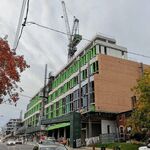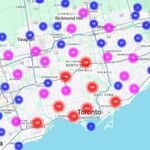During the pandemic, the chief medical officer of health became the face of public health communications in Ontario.
At crucial points, Moore — and his predecessor, Dr. David Williams — stepped to a podium to tell Ontarians about lockdowns, vaccine requirements, mandatory masking and other public health measures.
They became, for many, the authorities on how to stay safe.
But whatever the public perception, the independence of the office isn’t so cut and dry given the chief medical officer of health’s many, often competing priorities.
The office of the chief medical officer stressed in an email that Moore is a public servant who has “a reporting relationship to the Deputy Minister of Health” and as such, “endeavours to work collaboratively with the Deputy Minister of Health, Minister of Health and with other officials in the government of Ontario on matters of public health, including communication to the public.”
The chief medical officer of health, appointed by the government under the Health Protection and Promotion Act (HPPA) for a five-year term, “provides leadership and policy direction on public health matters and public health standards” in the province, the statement said.
Under the HPPA, the chief medical officer has a number of statutory powers including the ability to exercise independently “any of the powers of a medical officer of health or board of health,” and to “issue directives to health-care providers or health-care entities on precautions or procedures to be followed,” the statement said.
“The CMOH wears several hats,” says Patrick Fafard, a professor in the faculties of social sciences and medicine at the University of Ottawa. “And the pandemic has revealed that there are tensions — if not outright contradictions — between these hats.
“The way the role is constructed, in general, but especially during a public health crisis, is that it’s meant to be an independent and autonomous person who can both provide advice to ministers, but also speak directly to the public as they deem appropriate,” says Fafard, considered one Canada’s top experts on chief medical officers.
He says that in Ontario, the chief medical officer has many roles: adviser to the government; a senior public servant who oversees and implements the government’s public health priorities; the “explainer-in-chief” for the public; and, increasingly, a government spokesperson.
“The challenge lies in the fact that those different roles don’t align perfectly,” says Fafard, also a senior investigator at the Global Strategy Lab, an interdisciplinary research and policy lab that advises governments on designing laws and policies to promote public health.
He adds that he would not label the communication in the emails as “inappropriate.” The chief medical officer of health, as a top bureaucrat, is “subject to the same communication strategy as every other public servant,” he says.
Rather, the tight co-ordination is “inconsistent with the public perception of the role,” says Fafard.
That tension is the reason some are calling on provincial governments
to clarify the role of the chief medical officer.




